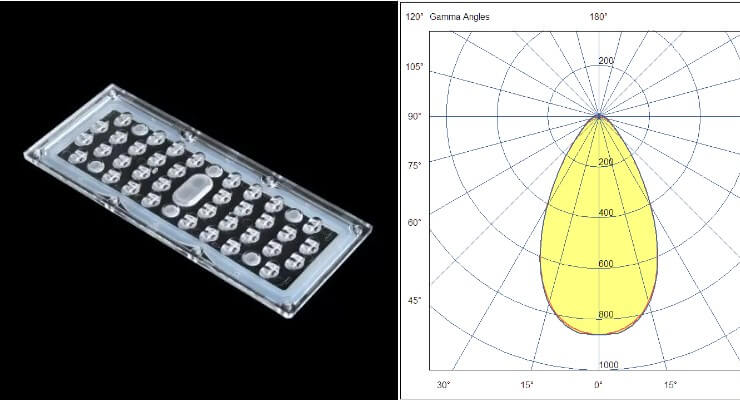To turn an ordinary LED into a full-fledged lighting device, the characteristics of which are 100% consistent with operating conditions, you must use secondary optics. An excellent example is the products of the brands Limbus and Herculux, presented in various versions, corresponding in size and shape to the specific board on which the LEDs are located.
The following materials are used in the manufacture of secondary optics:
- acrylic;
- glass;
- polycarbonate.
The listed materials are characterized by ideal optical properties, complete transparency, no distortion, which allows fully realize the power of the emitter and achieve maximum efficiency of its work. In addition, the secondary optics for LEDs is resistant to heat, cracks do not form in the structure and on the surface even with a sufficiently strong external physical impact. The listed materials retain their original transparency for years and decades.
Necessity
Lighting fixtures are oriented both to single emitters and their entire groups. The main functions are as follows:
- Changing the angle of propagation of the light flux.
- Achieving the optimal density of the light beam, which allows you to create schemes of both accentuated, spot lighting, and general.
- Correction of the dimensions and configuration of the light spot.
A competent choice of secondary optics allows you to effectively use LEDs in all conditions, no matter how high they are placed. Emitters can be used both in open spaces, for example, in squares, parking complexes, transport terminals, production sites, provided they are placed at a height of tens of meters, and in closed facilities, inside warehouses, shops. In any situation, it is possible to achieve maximum system efficiency, eliminate the formation of "dead zones" and illuminated areas, achieve illumination conditions that comply with current regulatory and technical documents.
Due to its strength, secondary optics further increase the protection of emitters from physical influences, impacts, prevents contact with dust, humid air, water, improves the removal of excess heat energy, which has a positive effect on the service life.





